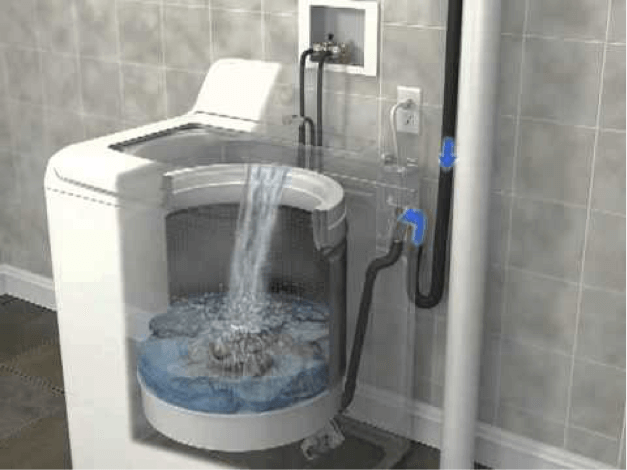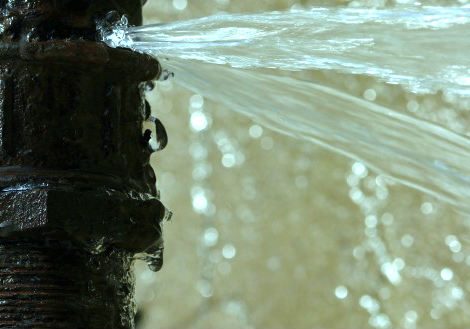Quick-Response Plumbing: Tips for Identifying as well as Fixing Ruptured Pipes
Quick-Response Plumbing: Tips for Identifying as well as Fixing Ruptured Pipes
Blog Article
What are your thoughts with regards to How to Install and Connect a New Dishwasher?

A burst pipe is a significant emergency; you can just stand as you watch water you pay dearly to reunite with the planet. In even worse cases, you discover a swimming pool on your cooking area flooring, which is a great trip risk, particularly if you have youngsters around. If the pipeline that burst was in your walls, bad news: you may need to repaint that entire section.
How can a calamity like a burst pipeline be stopped as well as handled? Well, by paying attention to your expert emergency plumbings and adhering to these policies.
Just how do I understand when my pipelines have burst?
Fluctuating water stress
Pipelines do not simply burst in a day. You might have observed that your kitchen tap or shower does not run quickly when you transform the faucet. It may pause for a couple of secs and afterwards blast you with even more force than typical.
In other instances, the water might seem normal in the beginning, after that decrease in pressure after a few seconds.
Damp wall surfaces as well as water stains
Before a pipeline ruptureds, it will leak, the majority of times. If this relentless leaking goes unnoticed, the leakage might graduate into a vast tear in your pipe. One easy means to prevent this emergency is to look out for wet wall surfaces ad water stains. These water discolorations will certainly lead you right to the leak.
Puddles under pipes and also sinks
When a pipe ruptureds, the discharge develops a puddle. It might appear that the puddle is expanding in size, and despite the number of times you wipe the pool, in a few mins, there's one more one waiting to be cleaned. Usually, you might not be able to map the puddle to any kind of visible pipes. This is an indicator to call an expert plumber.
Untraceable trickling sounds
Pipe ruptureds can happen in one of the most unpleasant places, like within concrete, inside wall surfaces, or under sinks. When the house goes quiet, you may have the ability to hear an annoyingly consistent dripping sound. Even after you have actually checked your shower head as well as kitchen faucet, the dripping may proceed.
Precious viewers, the leaking might be coming from a pipeline inside your walls. There isn't much you can do regarding that, except inform an expert plumber.
Turn off the Water
When water ices up, it expands in quantity by concerning 9 percent. As well as it increases with tremendous pressure: The pressure inside pipes might go from 40 pounds per square inch to 40,000 psi! No pipeline can hold that much pressure, so it breaks open. The break might occur where the ice kinds, but more frequently, it takes place where water pressure locates a weak spot in the pipeline. That might be inches and even feet from the icy area. Discover the water shutoff valve and also turn off the water to avoid even more damage. You may additionally need to turn off the electricity as well, depending upon where the leakages occurs as well as just how big it is.
Polluted water
Many individuals think a burst pipe is a one-way electrical outlet. Quite the contrary. As water flows out of the hole or tear in your plumbing system, impurities find their way in.
Your water might be infected from the source, so if you can, check if your water storage tank has any kind of troubles. However, if your drinking water is provided and also purified by the city government, you ought to call your plumber promptly if you see or scent anything funny in your water.
What do I do when I find a burst pipeline?
Your water meter will certainly remain to run also while your water wastes. To decrease your losses, find the main controls as well as transform the supply off. The water pipe are an above-ground framework beside your residential or commercial property.
How to Fix & Detect a Leaking Pipe
How Do I Know if a Pipe is Leaking?
Leak detection tests can help you determine if your pipe has a leak. Even if you don’t see an apparent leak, you should still conduct leak detection tests regularly to save water and money—and prevent major damage to your home.
Water meter. It can be helpful to figure out what your usual water meter usage numbers are and then monitor them regularly. To monitor your meter, first, turn off all water faucets in your home. Check the meter and write down the numbers. In a few hours, check the meter again. If the numbers have changed, you have a leak. Water gauge. Use a water gauge to test your water pressure. Your showerhead should produce a certain amount of water pressure based on its model and design. If the pressure is lower than it is supposed to be for that specific showerhead, your home likely has a leak. Puddles. Look inside your bathroom, laundry, and kitchen sink cabinets. Puddles around the cabinets or around toilets, tubs, showers, and washing machines indicate the presence of a leaking pipe. You may also notice loose tiles, peeling or flaking paint, or mold caused by water accumulation. Napkin test. Even if you don’t see any puddles, you may still have a leak. You can test for water leaks in the bathroom, laundry, and kitchen by wiping below-sink connections with a napkin, paper towel, or piece of toilet paper. If it becomes damp, you probably have a leaking pipe under the sink. Discolored walls. Walls that are discolored—usually with brown or yellow stains—or bulging might mean that they have been impacted by water damage caused by a leaking pipe. Smell. A leaky pipe will create sitting water, and over time, that water may develop a musty smell. If your home smells musty, but you can’t locate the source, it may be due to a leak. Steps for Fixing a Leaking Pipe
A leaky drain can be remedied by tightening the pipe base, replacing the drain seal, caulking the rim, and tightening the pipe nut. Similarly, a leaking toilet pipe can be treated by tightening the packing nut. You may also need to replace the valve. A leaky faucet may just need tightening or replacement of the washers. If that doesn’t work, consider replacing your faucet. If your pipe has a hole in it, you may want to use a pipe leak sealer or pipe leak tape. This quick fix for water pipe leaks can also temporarily fix a copper pipe leak. https://www.ahs.com/home-matters/quick-tips/how-to-tell-if-pipes-are-leaking/

I hope you enjoyed our part on What to Know Before Installing a Dishwasher. Thank you for taking the time to browse our short article. Loved our piece? Please share it. Let somebody else discover it. We truly appreciate reading our article about How to Prepare for Your Dishwasher Installation.
Book
Report this page